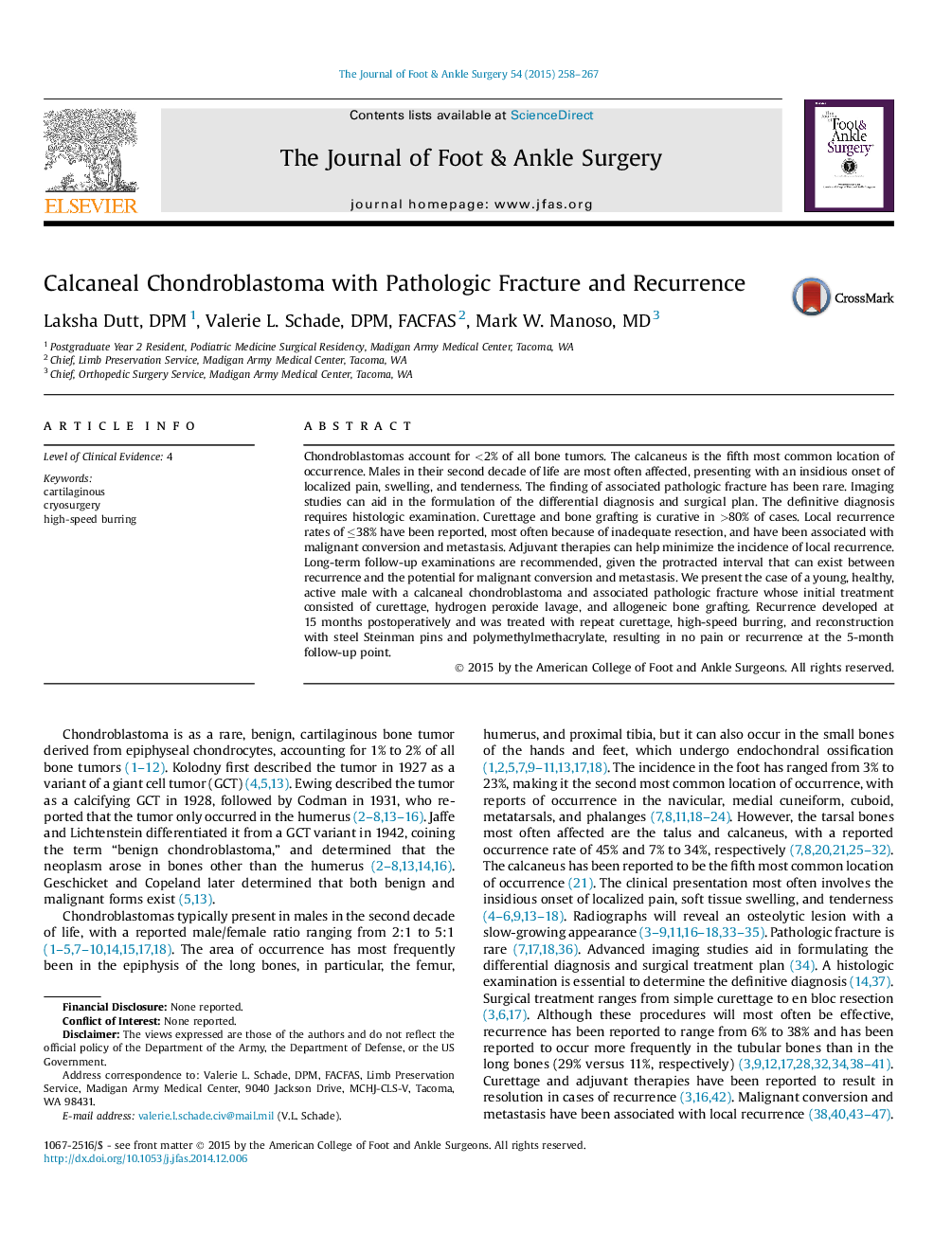| Article ID | Journal | Published Year | Pages | File Type |
|---|---|---|---|---|
| 2719519 | The Journal of Foot and Ankle Surgery | 2015 | 10 Pages |
Chondroblastomas account for <2% of all bone tumors. The calcaneus is the fifth most common location of occurrence. Males in their second decade of life are most often affected, presenting with an insidious onset of localized pain, swelling, and tenderness. The finding of associated pathologic fracture has been rare. Imaging studies can aid in the formulation of the differential diagnosis and surgical plan. The definitive diagnosis requires histologic examination. Curettage and bone grafting is curative in >80% of cases. Local recurrence rates of ≤38% have been reported, most often because of inadequate resection, and have been associated with malignant conversion and metastasis. Adjuvant therapies can help minimize the incidence of local recurrence. Long-term follow-up examinations are recommended, given the protracted interval that can exist between recurrence and the potential for malignant conversion and metastasis. We present the case of a young, healthy, active male with a calcaneal chondroblastoma and associated pathologic fracture whose initial treatment consisted of curettage, hydrogen peroxide lavage, and allogeneic bone grafting. Recurrence developed at 15 months postoperatively and was treated with repeat curettage, high-speed burring, and reconstruction with steel Steinman pins and polymethylmethacrylate, resulting in no pain or recurrence at the 5-month follow-up point.
